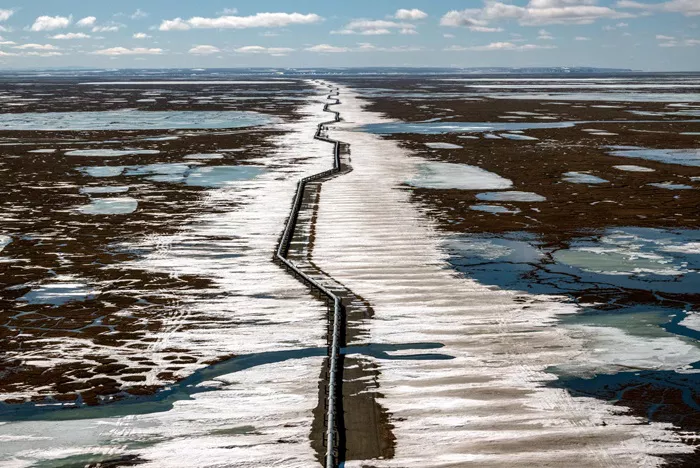Alaska, known for its vast wilderness and natural resources, has long been a significant player in the U.S. oil industry. The state’s crude oil reserves, particularly in the Arctic and North Slope regions, have been the subject of extensive exploration and development. In this article, we’ll explore the estimated quantities of crude oil thought to be available in Alaska, the key regions involved, and the implications for both the local and national economy.
Crude Oil Reserves in Alaska: An Overview
Alaska’s crude oil reserves are primarily located in two key areas: the North Slope and the Arctic National Wildlife Refuge (ANWR). The amount of oil available in these regions has significant implications for U.S. energy independence, economic development, and environmental concerns.
1. North Slope Oil Reserves
North Slope Overview
The North Slope region, which includes the Prudhoe Bay Oil Field, has been the most productive oil area in Alaska. Discovered in 1968, Prudhoe Bay is one of the largest oil fields in the United States.
Estimated Reserves
Prudhoe Bay Oil Field: Initial estimates suggested that Prudhoe Bay held about 25 billion barrels of oil. However, technological advancements and further exploration have revised these figures. As of recent estimates, around 10-15 billion barrels of oil remain recoverable from this field.
Other Fields: Alongside Prudhoe Bay, several other fields on the North Slope, including Kuparuk, Alpine, and Colville River, contribute to Alaska’s overall oil reserves. These fields hold additional significant quantities of oil, though the exact numbers can vary.
Production and Development
Oil Production: The North Slope fields have been in production since the 1970s, and their output has played a critical role in meeting U.S. energy needs. Production has declined from its peak due to maturing fields and natural depletion, but enhanced recovery techniques continue to extract valuable resources.
Infrastructure: The Trans-Alaska Pipeline System (TAPS) is a critical infrastructure component, transporting crude oil from the North Slope to the port of Valdez, from where it is shipped to markets.
See also: What Country In The Arabian Peninsula Is The World’s Largest Producer And Exporter Of Crude Oil?
2. Arctic National Wildlife Refuge (ANWR)
ANWR Overview
The Arctic National Wildlife Refuge (ANWR) is a protected area located in northeastern Alaska. The debate over drilling in ANWR has been ongoing for decades, with environmental groups opposing it and advocates arguing for its economic benefits.
Estimated Reserves
ANWR’s Coastal Plain: The U.S. Geological Survey (USGS) has estimated that the coastal plain of ANWR could hold between 4.3 and 11.8 billion barrels of oil. This range reflects varying degrees of exploration and uncertainty.
Exploration and Development: As of recent developments, exploration efforts in ANWR have been limited due to environmental protection measures. However, recent policy changes have opened the door for potential drilling, pending regulatory approvals and environmental assessments.
Economic and Environmental Considerations
Economic Potential: If developed, ANWR could significantly boost U.S. oil production and contribute to energy independence. The potential economic benefits include job creation and increased revenue from oil production.
Environmental Impact: Environmentalists express concerns about the potential impact of drilling on the fragile Arctic ecosystem, including risks to wildlife, climate, and indigenous communities. Balancing economic benefits with environmental protection remains a contentious issue.
3. Other Significant Oil Resources
Beaufort Sea and Chukchi Sea
Beaufort Sea: Offshore drilling in the Beaufort Sea has been another focus for oil exploration. Estimates suggest that the region holds substantial reserves, although exact numbers are often subject to ongoing studies and exploration activities.
Chukchi Sea: The Chukchi Sea, located to the west of the North Slope, also holds potential oil reserves. Estimates and exploration efforts have fluctuated, with some findings indicating significant resources.
See also: Who Is The Biggest Producer Of Crude Oil 2024?
Challenges and Future Prospects
Technological Advances
Enhanced Recovery Techniques: Advances in technology, such as horizontal drilling and hydraulic fracturing (fracking), have improved the ability to extract oil from existing fields and new discoveries.
Exploration Innovations: Innovations in seismic imaging and other exploration techniques continue to refine estimates of available reserves and guide future drilling efforts.
Regulatory and Environmental Factors
Policy Changes: Regulatory policies play a crucial role in determining the feasibility and extent of oil exploration and production. Changes in federal and state policies can significantly impact the development of Alaska’s oil resources.
Environmental Concerns: Addressing environmental concerns and balancing conservation with development is an ongoing challenge. Collaboration between stakeholders, including government agencies, industry, and environmental groups, is essential for sustainable resource management.
Conclusion
Alaska remains a crucial player in the U.S. oil industry, with significant reserves located primarily in the North Slope region and potentially in the Arctic National Wildlife Refuge. Estimates suggest that millions of barrels of oil are still available for extraction, though the exact quantities are subject to ongoing exploration and technological advancements. As the debate over drilling in protected areas continues, finding a balance between economic benefits and environmental protection will be key to managing Alaska’s oil resources effectively. Staying informed about developments in exploration, production, and policy changes will be essential for understanding the future of crude oil availability in Alaska.
Related Topics:

